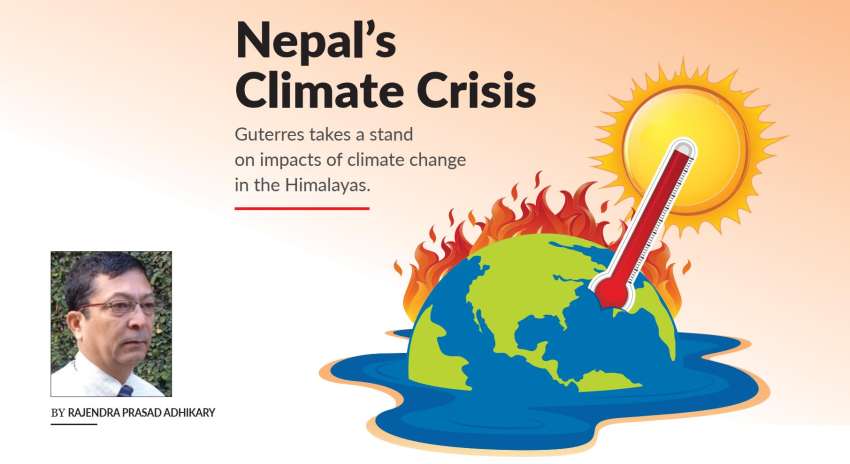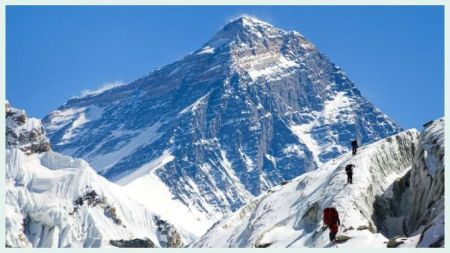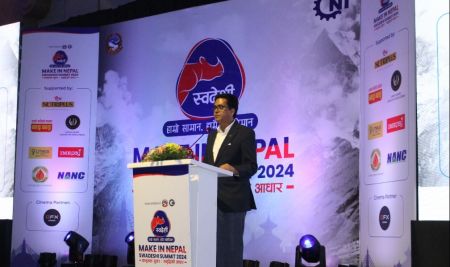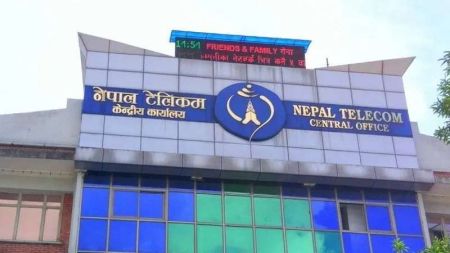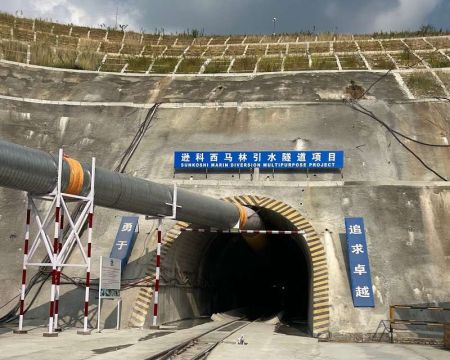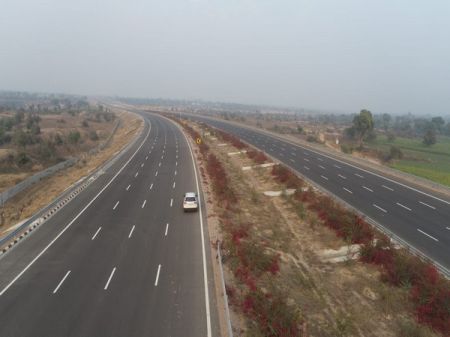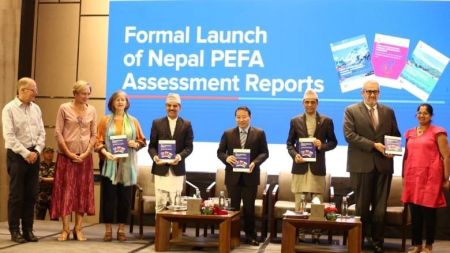BY Rajendra Prasad Adhikary
United Nations Secretary-General, Antonio Guterres, ventured into the high mountainous terrains of Everest and Annapurna regions during his recent Nepal visit. His objective was to engage with local communities and assess evidence of melting glaciers, dwindling drinking water springs, and various issues linked to snow avalanches triggered by rainfall.
From the UN's perspective, Nepal is seeing the impacts of climate change on the livelihoods of the people despite committing nearly 45% of its territory to preserving forests as an effective means of atmospheric carbon sequestration. Despite this commitment, the impacts of ongoing climate change on the daily livelihoods of the people are forcing them to migrate in search of food and shelter. This situation is seen as falling into a global vicious trap with the affected country having made no mistakes of its own. During the visit, Guterres commended Nepal's efforts to achieve zero carbon emissions by 2045, while criticising high carbon-emitting industrial nations for not prioritising compensation for damage and loss suffered by vulnerable countries due to climate adversities.
Despite Nepal contributing a non-significant amount of carbon to the global atmosphere, the country is ranked fourth globally in the list of climate change-vulnerable nations. This position is expected to rise further when the current global temperature limit of 1.2 degrees Celsius is exceeded, leading to accelerated glacier melting.
Guterres emphasised the importance of globalising Nepal's precarious Himalayan ecosystem. This implies that contemporary climate action extends beyond industrial nations that emit excessive carbon into the atmosphere; it represents a new geopolitical fracture between industrialised, carbon-intensive nations and agrarian, less industrialised ones. As industrialised nations exploit the Earth's natural resources for economic growth, the geopolitical divide between the global north and south is likely to deepen.
Industrially rich nations emit over 30 gigatons of carbon dioxide into the Earth's atmosphere every year. According to 2018 statistics, China alone contributes 26.1%, while the USA, European Union, and India together account for 27.5%. In contrast, Nepal's carbon emissions are a mere 0.002%, an insignificant value in the global context of global warming. Despite its minimal carbon footprint, Nepal plays a crucial role in carbon absorption, demonstrating a commendable commitment to preserving forest resources at the policy level.
The Hindu Kush mountain region, spanning from Myanmar to Afghanistan and encompassing Nepal, Bhutan, Pakistan, and India, faces a significant threat due to the melting ice and permafrost. This phenomenon endangers the livelihoods, settlements, and cultural heritage of the region's inhabitants. Among Nepal's 2,700 glacier lakes, 21 are in a precarious state of collapse due to ice-moraine degradation. Moreover, the country faces a persistent threat from vulnerable high-altitude lakes in Tibet and the adjoining Himalayan region of India. Consequently, more than a quarter of the global population dependent on the Hindukush mountain ecosystems grapple with the consequences of climate change, which include altered river water flow due to flash floods from melting ice and erratic rainfall, leading to either excessive water during such events or insufficient water during summer heat.
Nepalis residing in the Terai, high and low mountain terrains, and valleys are consistently grappling with challenges on a larger scale compared to other nations. The accelerated melting of snow cover on high mountain peaks and surrounding glaciers is leading to a significant outmigration of people, compelled to leave their settlements due to recurrent landslides and avalanches. Moreover, downstream settlements in flatlands are frequently inundated by floods, and livelihoods across the country are at risk due to extreme heat and untimely intense rainfall.
The impact on infrastructure is evident, especially along riverbanks where hydraulic structures designed for hydropower extraction, irrigation, and drinking water are regularly washed away, necessitating extensive post-flood restoration efforts.
The restoration of the Melamchi drinking water intake site, crucial for supplying water to the Kathmandu valley through a 28-kilometre-long tunnel, has become a formidable task for the government.
The restoration of the Melamchi drinking water intake site, crucial for supplying water to the Kathmandu valley through a 28-kilometre-long tunnel, has become a formidable task for the government. Landslide debris originating from the Melamchi River source at the Helambu region has obstructed the river flow at various points, impeding the smooth passage of water through the tunnel. Technical reports from both the World Bank and the Asian Development Bank, following field visits to the affected Melamchi river zone, point to a conclusion that the heatwave generated by the warm ocean current from the Bay of Bengal is responsible for glacier melting and triggering multiple landslides throughout the Melamchi river corridor. The ambitious drinking water project, funded by the Asian Development Bank, aimed at supplying 170 million litres of drinking water daily to the residents of the Kathmandu valley, is currently far from achieving full-fledged performance. The rehabilitation of the Melamchi river to restore it to a stable condition demands substantial technical expertise and financial investment.
The upcoming COP-28 conference in Dubai holds great significance for Nepal, particularly as Prime Minister Pushpa Kamal Dahal has publicly stated that Nepal will raise climate issues in the conference. This concern has already been raised by the UN Secretary-General, who, from the Mount Everest region, emphatically communicated the alarming reality of Himalayan melting. Given this backdrop, Nepal should actively engage in the panel of countries seeking compensation for the losses and damages incurred.
The Melamchi drinking water project stands a high chance of garnering international attention as the climate change catastrophes it faced has been supported by studies conducted by multinational banks and international academic research centres. During his visit to Nepal, the Secretary-General expressed particular concern about the potential shortage of drinking water for the large population residing in the Himalayan periphery. The diminishing water flow in the Himalayan rivers, including Indus, the Ganges, and Brahmaputra, signals an imminent catastrophic threat of water scarcity for over a billion people who depend on these water sources for their livelihoods.
Moreover, the Secretary-General's visit to the high mountain terrains of Nepal and his commitment to drawing global attention to the existing vulnerabilities and potential future disasters in the Himalayan landscape should compel leaders and climate scientists worldwide to redirect their resources towards preserving the Himalayan ecosystem.
(Adhikary is an engineer and served Nepal government in various high level capacities.)


